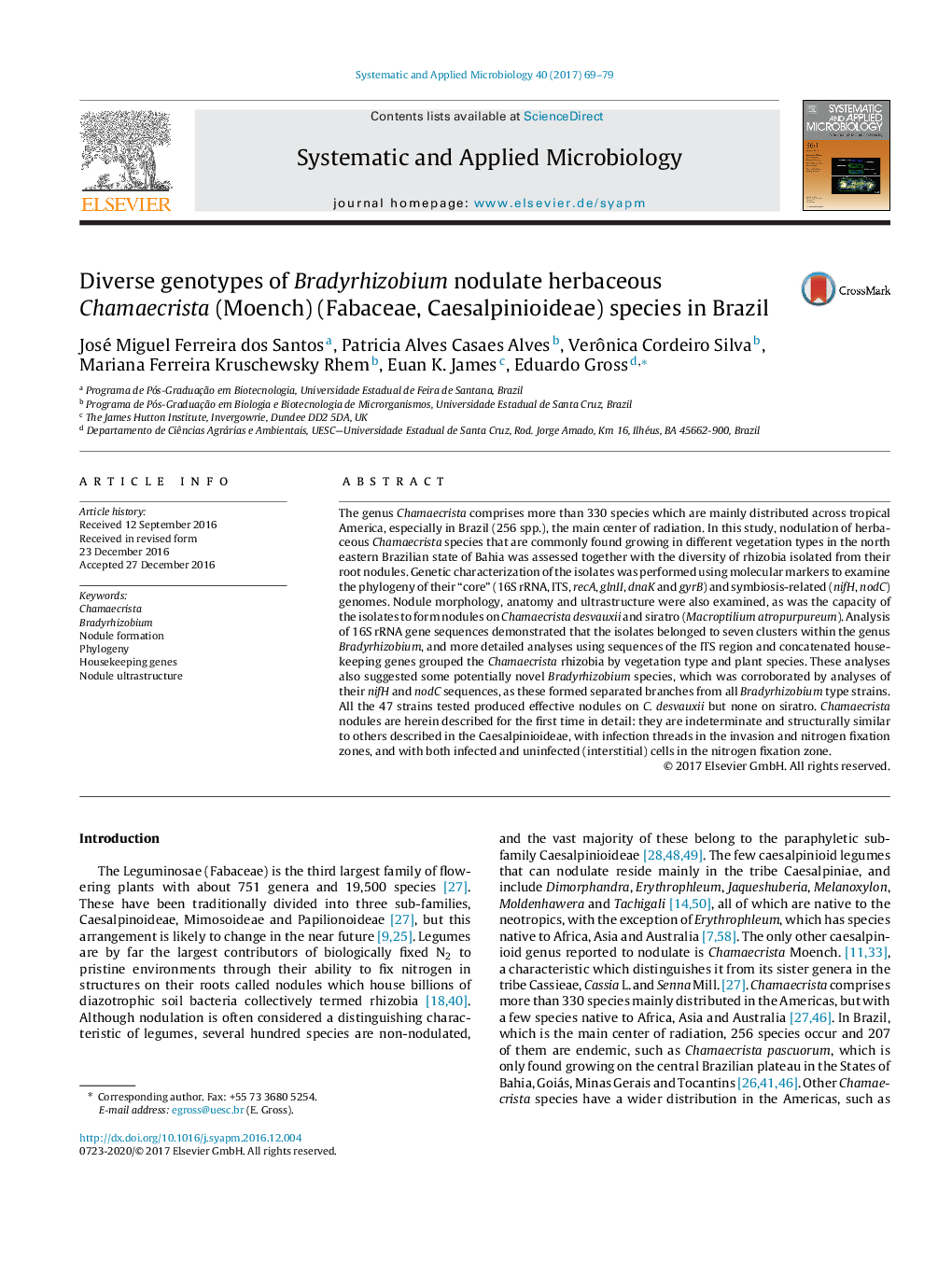| کد مقاله | کد نشریه | سال انتشار | مقاله انگلیسی | نسخه تمام متن |
|---|---|---|---|---|
| 5519139 | 1401107 | 2017 | 11 صفحه PDF | دانلود رایگان |

The genus Chamaecrista comprises more than 330 species which are mainly distributed across tropical America, especially in Brazil (256 spp.), the main center of radiation. In this study, nodulation of herbaceous Chamaecrista species that are commonly found growing in different vegetation types in the north eastern Brazilian state of Bahia was assessed together with the diversity of rhizobia isolated from their root nodules. Genetic characterization of the isolates was performed using molecular markers to examine the phylogeny of their “core” (16S rRNA, ITS, recA, glnII, dnaK and gyrB) and symbiosis-related (nifH, nodC) genomes. Nodule morphology, anatomy and ultrastructure were also examined, as was the capacity of the isolates to form nodules on Chamaecrista desvauxii and siratro (Macroptilium atropurpureum). Analysis of 16S rRNA gene sequences demonstrated that the isolates belonged to seven clusters within the genus Bradyrhizobium, and more detailed analyses using sequences of the ITS region and concatenated housekeeping genes grouped the Chamaecrista rhizobia by vegetation type and plant species. These analyses also suggested some potentially novel Bradyrhizobium species, which was corroborated by analyses of their nifH and nodC sequences, as these formed separated branches from all Bradyrhizobium type strains. All the 47 strains tested produced effective nodules on C. desvauxii but none on siratro. Chamaecrista nodules are herein described for the first time in detail: they are indeterminate and structurally similar to others described in the Caesalpinioideae, with infection threads in the invasion and nitrogen fixation zones, and with both infected and uninfected (interstitial) cells in the nitrogen fixation zone.
Journal: Systematic and Applied Microbiology - Volume 40, Issue 2, March 2017, Pages 69-79